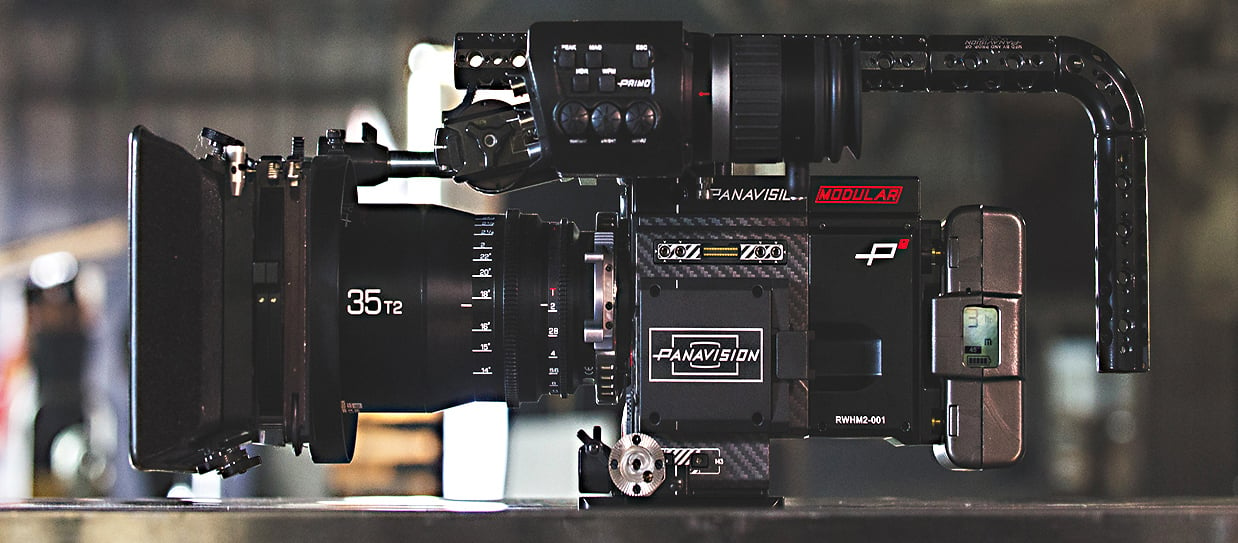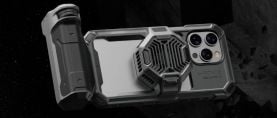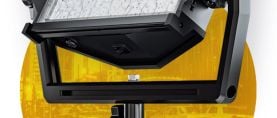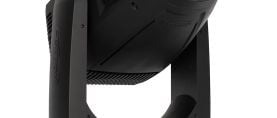
Panavision Unveils DXL-M “Modular” Camera System, Lenses and More
The Millennium DXL goes portable with the Red DSMC2 body, plus new lightweight Primo X lenses, new anamorphic options and the variable LCND filter.
The Millennium DXL goes portable with the Red DSMC2 body, plus new lightweight Primo X lenses, new anamorphic options and the variable LCND filter.
Transferring workflow and accessory items from the Millennium DXL series of cameras to the DSMC2 camera body from Red (just announced May 21 as replacement to their Red Weapon and Red Epic-W housings) Panavision and Light Iron presented the DXL-M camera accessory kit for the first time this last Wednesday, May 30th, at Light Iron's facilities in Hollywood.
With availability by the end of 2018, the DXL-M builds on the diminutive size of the DSMC2 body, starting at a base weight of 8 lbs and maxing out at 24 lbs when fully kitted. Through a dedicated iPhone app, the DXL-M will run the same menu system as the Millennium DXL2 alongside the 16-bit Light Iron LiColor2 image processing pipeline that was updated with the Millennium DXL2 in February.

Aimed squarely at drone and other remote-operation needs, the DXL-M also brings ACN time code and motorized lens controls, both wireless, as well as a 600-nit HDR Primo EVF to your choice of Red Monstro 8K full-frame, Helium 8K Super 35 or Gemini 5K Super 35 sensors.

“Millennium DXL2 is the cornerstone of an ever-evolving ecosystem that is designed to improve creative control across every department,” says Michael Cioni, Senior Vice President of Innovation at Panavision and Light Iron, via the press release. “By combining the company’s expertise in optics, filters, color science and postproduction with strategic partner integrations, we are able to offer filmmakers an entirely fresh image and workflow that is only available within DXL’s ecosystem.”
Light Iron also upgraded the Millennium DXL family with version 1.0 of their “directly editable” D2E (direct-to-edit) dailies and proxy system. With wireless control over LUT and CDL looks, the D2E pipeline provides detailed color metadata that will eliminate time-consuming renders for immediate preview of footage and "looks" directly from camera.
Joining Panavision’s deep roster of large-format lenses — including the Primo 70, Sphero 65 and Ultra Panavsion 70 optics — several new lens lines were also shown.

With compact designs, the Primo X is described as the “first cinema lens specially designed for use on drones and gimbals.” Featuring weather sealing and exacted counterbalance for improved aerodynamic performance, two Primo X primes are promised, a 14mm (T3.1) and 24mm (T1.6). Slated for release in 2019, a 24-70mm (T2.8) Primo X zoom will also be offered.
Panavision teased several upcoming large-format lens sets: the H Series sphericals, Ultra Vista anamorphics, and PanaSpeed anamorphics. The H Series, out first, has been created by using vintage glass and coatings for elevated blacks, softer contrast, a pleasing tonal quality to skin, smooth edge transitions and the subtle roll-off of highlights.
With a custom 1.6x squeeze, the Ultra Vistas, arriving in 2019, will cover the full 8K sensor in the Millennium DXL cameras, creating an ultra-widescreen 2.76:1 aspect ratio. Demo footage has an elliptical bokeh and horizontal flare.
The PanaSpeeds are scheduled for the third-quarter of 2018. As the name suggests, they are built for a fast aperture, revising Panavision’s Primo line with a T1.4 iris, the largest option in the large-format market.
Last, but by no means least, is an electronic liquid crystal neutral-density filter, the Panavision LCND, which offers six stops of controlled variable filtration in a single front-of-the-lens optical configuration. Replacing the use of multiple standard ND filters with a single solution, the LCND starts at 0.3 and then steps through densities of 0.6, 0.9, 1.2, 1.5 and 1.8.
Ideal for drones and remote operations, the LCND is also targeted for an early 2019 release.
The original Millennium DXL, a collaboration between Panavision and Light Iron, based around the Red sensor, was first showcased at Cine Gear in 2016 after making its public debut at the ASC Clubhouse.
Light Iron, acquired by Panavision in 2015, recently opened a sixth color-correction and post house in Atlanta.
Follow Light Iron on Instagram, Facebook and Twitter.
Follow Panavision on Facebook, Instagram and Twitter.
Stay up to date with American Cinematographer on Facebook, Instagram and Twitter.






